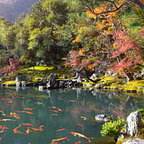Freya Stark
When I was younger, there was nothing I loved more than a good Greek Myth. I had bookshelves filled with stories of ancient heroes at the mercy and whim of Olympian gods and monsters. It was logical then that my obsession for anything to do with ancient Greece triggered my fascination for ancient Egypt, Rome, and of course the ancient Persian Empire. That is how one rainy afternoon, I stumbled upon the name, Freya Stark, which made such a lasting impression all those years ago, and to this day, remains as evocative and elusive as the countries she explored.
I can’t pinpoint the exact moment that I realized that all the important finds at ancient sites around the world were always led by men. Therefore, it shouldn’t be a surprise that it was always the men who were given the credit for whatever fabulous relics were uncovered. Women like Mary Leakey were always the ‘wives’ in the story. This is why when I first read about the great intrepid explorer and writer Freya Stark, I was immediately intrigued. Here was a truly astounding woman born at a time (1893), when women were bound by social restrictions much stricter than our own, who nevertheless made a conscious decision to live the life she wanted rather than the life expected of her. She thus went on to explore some of the most dangerous and inaccessible places in the world.
One of her most famous trips was to find the Valley of the Assassins in Persia. During the Middle Ages, this Valley was once the home to one of the most feared militant sects, the Order of Assassins; men who broke away from Ismailism- a part of Shia Islam which believed Ismail Ibn Jafar to be the true Iman- to form their own group led by Hassan Sabah. Together, they made a pact to rid the world of their religious and political adversaries. They held kings and governments in terror until their defeat by the Mongols in the 13th century. Marco Polo wrote about the Order in his travelogues and the ‘old man of the mountains’ (Hassan) who ruled them. Marco Polo goes on to describe how the ‘old man’ controlled his loyal group of men with the use of hashish. Drugging his followers, he would have them removed into a room wonderfully decorated. When the young men woke up in their drug-induced state, they would be fed and taken care of by beautiful young girls who sang and danced for their entertainment. After a few days of this dreamlike fuge, the men would be taken before the ‘old man’ who then proceeded to indoctrinated them by promising them an entrance to Paradise if they followed his bloodthirsty will. He convinced them that he held the power to guarantee this promise. Thus, the young men who joined his group became fearless assassins who undertook the most dangerous of assignments without fear of death, because they knew that if they died, Paradise awaited them. This image of the Valley of Assassins was what predominantly remained with the West until Freya Stark decided to set out for herself and find the lost Valley of Assassins in 1930. She eventually found it and became the first European to ever set foot in various parts of the region. She wrote a book that recounted her experience, the difficulties she encountered, the people she met, and her impression of the area, which became an instant bestseller. Her book helped revive interest in the area and changed the public’s misperception of Persia and surrounding areas as being more than a dusty collection of rocks populated by bloodthirsty religious fanatics. Freya continued to travel in the region and write, and eventually was contacted by the British government as an expert in the area, and for her knowledge of the Arab language and culture. The maps she made of the Middle East, and information she collected in her travels of that region were invaluable to the Allies during WWII.
Freya Stark continued to defy social expectations of what was proper behavior for a woman of her status and age until she died in 1993. Freya explored and wrote about less well-traveled parts of the world well into her 70s, and in her 80s, revisited some of the exotic haunts of her youth. Her books first became popular because of the novelty of intrepid women who were explorers and cartographers were a rarity in the Victorian era. Later, Freya’s books became popular for their own merit; they were cool, articulate observations dotted with warm, humorous stories that brought insight and appeal to an area of the world long thought of with mistrust and suspicion by the West. Her appeal continues today, and a whole new generation of readers like myself find ourselves enthralled by the charm and force that was Freya Stark.
